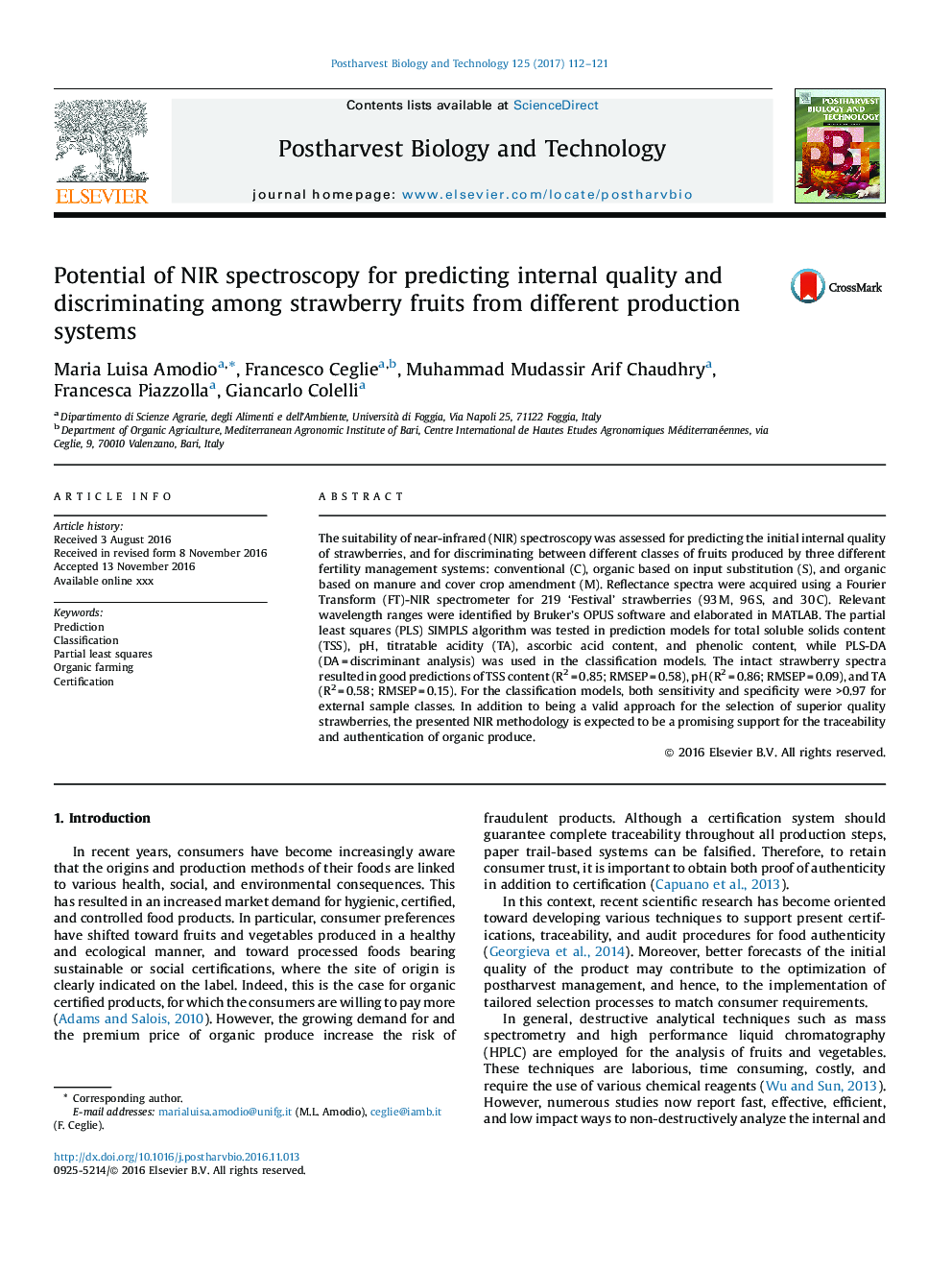| Article ID | Journal | Published Year | Pages | File Type |
|---|---|---|---|---|
| 8882098 | Postharvest Biology and Technology | 2017 | 10 Pages |
Abstract
The suitability of near-infrared (NIR) spectroscopy was assessed for predicting the initial internal quality of strawberries, and for discriminating between different classes of fruits produced by three different fertility management systems: conventional (C), organic based on input substitution (S), and organic based on manure and cover crop amendment (M). Reflectance spectra were acquired using a Fourier Transform (FT)-NIR spectrometer for 219 'Festival' strawberries (93Â M, 96Â S, and 30Â C). Relevant wavelength ranges were identified by Bruker's OPUS software and elaborated in MATLAB. The partial least squares (PLS) SIMPLS algorithm was tested in prediction models for total soluble solids content (TSS), pH, titratable acidity (TA), ascorbic acid content, and phenolic content, while PLS-DA (DAÂ =Â discriminant analysis) was used in the classification models. The intact strawberry spectra resulted in good predictions of TSS content (R2Â =Â 0.85; RMSEPÂ =Â 0.58), pH (R2Â =Â 0.86; RMSEPÂ =Â 0.09), and TA (R2Â =Â 0.58; RMSEPÂ =Â 0.15). For the classification models, both sensitivity and specificity were >0.97 for external sample classes. In addition to being a valid approach for the selection of superior quality strawberries, the presented NIR methodology is expected to be a promising support for the traceability and authentication of organic produce.
Related Topics
Life Sciences
Agricultural and Biological Sciences
Agronomy and Crop Science
Authors
Maria Luisa Amodio, Francesco Ceglie, Muhammad Mudassir Arif Chaudhry, Francesca Piazzolla, Giancarlo Colelli,
